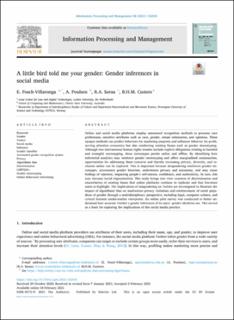| dc.description.abstract | Online and social media platforms employ automated recognition methods to presume user preferences, sensitive attributes such as race, gender, sexual orientation, and opinions. These opaque methods can predict behaviors for marketing purposes and influence behavior for profit, serving attention economics but also reinforcing existing biases such as gender stereotyping. Although two international human rights treaties include explicit obligations relating to harmful and wrongful stereotyping, these stereotypes persist online and offline. By identifying how inferential analytics may reinforce gender stereotyping and affect marginalized communities, opportunities for addressing these concerns and thereby increasing privacy, diversity, and inclusion online can be explored. This is important because misgendering reinforces gender stereotypes, accentuates gender binarism, undermines privacy and autonomy, and may cause feelings of rejection, impacting people’s self-esteem, confidence, and authenticity. In turn, this may increase social stigmatization. This study brings into view concerns of discrimination and exacerbation of existing biases that online platforms continue to replicate and that literature starts to highlight. The implications of misgendering on Twitter are investigated to illustrate the impact of algorithmic bias on inadvertent privacy violations and reinforcement of social prejudices of gender through a multidisciplinary perspective, including legal, computer science, and critical feminist media-studies viewpoints. An online pilot survey was conducted to better understand how accurate Twitter’s gender inferences of its users’ gender identities are. This served as a basis for exploring the implications of this social media practice. | en_US |

